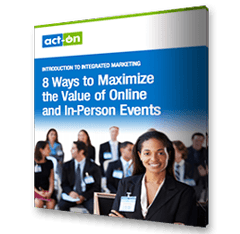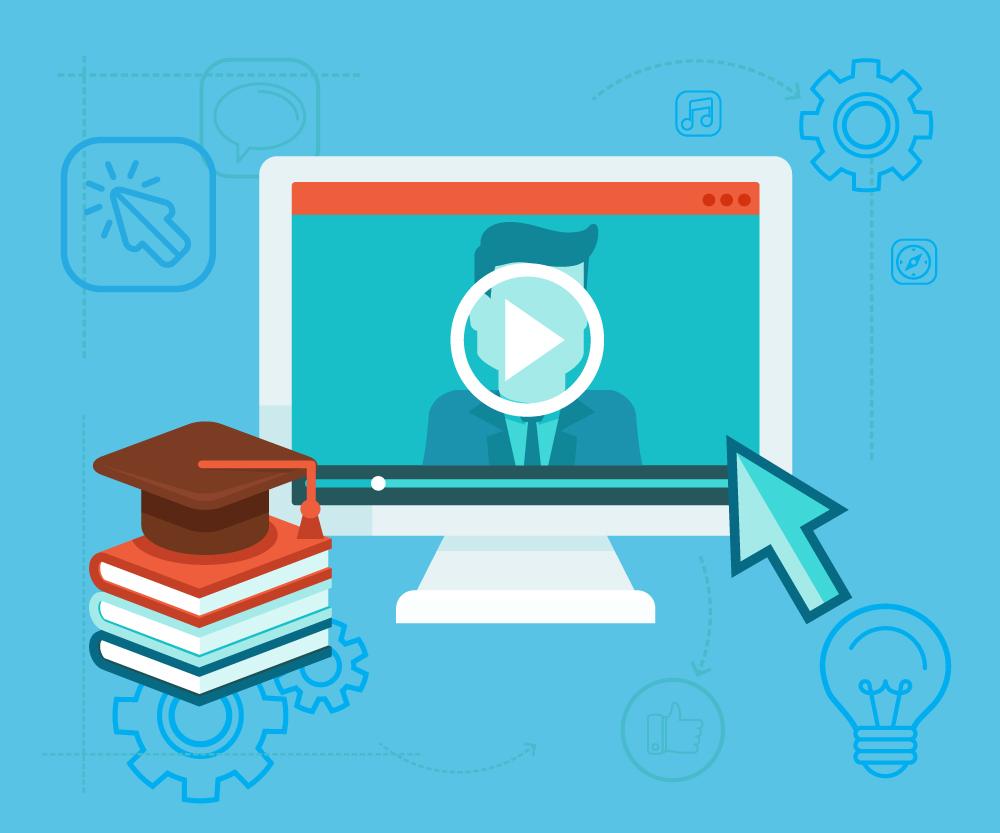 Webinars can be a powerful way to reach new audiences, develop profitable business partnerships, and strengthen relationships with existing customers. They can support multiple strategic efforts, including brand awareness, lead generation, training and education, and thought leadership. Over the past decade, webinars have gone from a productivity tool enabling small collaborative events to an essential content channel for most B2B marketers. In fact, according to the Content Marketing Institute, over 60% of marketers are using webinars as part of their content marketing programs.
Webinars can be a powerful way to reach new audiences, develop profitable business partnerships, and strengthen relationships with existing customers. They can support multiple strategic efforts, including brand awareness, lead generation, training and education, and thought leadership. Over the past decade, webinars have gone from a productivity tool enabling small collaborative events to an essential content channel for most B2B marketers. In fact, according to the Content Marketing Institute, over 60% of marketers are using webinars as part of their content marketing programs.
The power of webinars is clear: They can deliver rich and engaging experiences, create interest, build trust, and encourage participants to take the next natural step in their decision-making process. They also have a great deal of longevity because they can be leveraged into many different kinds of content:
- A recorded webinar can be uploaded as a video through channels like YouTube.
- The slides can be shared on SlideShare.
- The transcript can be used to create blog posts and articles.
- Questions asked during a Q&A sessions can be used to spark ideas for even more content.
Webinars tend to convert at a higher rate than many other content types because the people who attend them have self-selected as having a challenge to solve that’s important enough to trade their time for, and consider the topic valuable enough to provide their contact information in trade for access. In addition, the deadline to register indicates some degree of urgency or need. Plus, a live one is interactive. When prospects attend a webinar, ask questions, and check out the follow-up materials, it can be a sign that they’re very engaged – and therefore, a hotter prospect.
Here are eight steps that will help you create a successful webinar, and provide you with a template to develop an ongoing campaign.
1. Plan your webinar
Planning your webinar is an essential step in ensuring that it will be successful. When developing your plan, make sure you clarify the following:
- Your target audience
- The topic and format of the event
- The production schedule
- How you will promote it
Your webinar plan will help you create an event that resonates with your target audience. It will also help you manage the details of producing and promoting the webinar. Make sure you detail out the major steps required to meet your production schedule, hit key dates, and determine owners.
 2. Create your webinar
2. Create your webinar
Producing a webinar is no small task. When you set out to create your event, make sure that the webinar covers a high-value topic that will resonate with your target audience. Ideally, you should find a presenter (or multiple presenters) who are subject matter experts and engaging speakers. When developing your detailed production schedule, you should allow at least three to four weeks for the production and promotion of the event; I’ve seen vendors promote as far ahead as six to eight weeks. You’ll need to spend time creating promotional emails, a landing page, and the webinar presentation itself. It may also take some time to recruit and manage the speakers who will present at your webinar.
When you create your promotional email and landing pages, keep the following best practices in mind:
- Come up with persuasive titles, subject lines, and calls to action. Need help? Here are some tips for writing better headlines and subject lines as well as compelling calls to action.
- Target a specific type of prospect and personalize the messaging to their interests. Learn more about how (and why) to create an audience segment.
- Provide problem-solving information rather than just trying to sell a product.
- Use expert speakers who will share specific best practices and tips designed to deliver real value.
3. Promote your webinar
The success of your webinar will largely depend on your ability to get the word out about it. Email marketing is an extremely effective way to promote online events. In fact, you should anticipate email generating the vast majority of registrations. At a minimum, plan to send three emails in advance of the event. Make sure your emails are well-crafted and tailored to the webinar’s target audience. You can also use other promotional channels such as social media (blog posts, Twitter, Facebook, Google+, LinkedIn, etc.) and display advertising to help promote your webinar.
During the promotion planning stage, to support your webinar’s success, you might want to map out the process of using emails both before and after the event like this:
- Send webinar invitation email to the appropriate list segment.
- Registrants get confirmation email. Non-registrants get a second invitation with a different message.
- Registrants get reminder email just before webinar.
- Send “thank you for attending” message to those you showed up with a link to the recording.
- Send “sorry you missed it” message to those who registered and didn’t show up with a link to the recording.
You many also want to include any other promotional activities in your process map, such as paid search ads, blog posts, social media, promotion on third-party websites, and so on.
4. Host your webinar
Hosting the live webinar can be an engaging and fun experience. There are pre-event logistics that require attention to detail, but once the webinar is live, your moderator and speakers will do most of the work. Your job is to make sure that they are prepared to deliver an engaging presentation to your attendees. There are many services that make the process easier, including Citrix GoToWebinar, ON24, and Cisco WebEx.
5. Promote your webinar (again)
After your webinar takes place, you should make an on-demand version of it available. You can promote this via email as well as social channels. Make sure you send a follow-up email to people who signed up for, but did not attend, the live webinar. Consider adding the on-demand to one of a series of nurture emails.
6. Use the webinar for lead generation
If lead generation is one of your business goals, webinars can help you achieve it. Define a follow-up plan for the leads. For example, marketing should follow up with people who registered for the event, but did not attend. A simple email directing people to the on-demand version of the event works well and you can even include a secondary piece of content that relates to the webinar topic to give your audience another opportunity to engage with your brand further. Sales can follow up with attendees using the phone and email, but make sure that sales is equipped with a script that references the topic of the webinar.
7. Measure the performance of the webinar
Like any marketing campaign, make sure that you measure the performance of your webinar. Pay close attention to the number of leads generated by the webinar and ask for sales’ feedback on the quality of these leads. Remember that many of these leads will require ongoing nurturing.
8. Score your registrants (and your webinar)
 You can give “attended” and “registered” leads different scores. If your webinar platform shows the data, notice how long people stuck with the presentation. You could give leads with the full hour of view time a higher score. Did half your audience drop off in the first five minutes? Did no one make to the half-way point? That’s a sign that your webinar quality isn’t what it needs to be, OR that your title and promotions set expectations (of a topic, perhaps) that were not fulfilled.
You can give “attended” and “registered” leads different scores. If your webinar platform shows the data, notice how long people stuck with the presentation. You could give leads with the full hour of view time a higher score. Did half your audience drop off in the first five minutes? Did no one make to the half-way point? That’s a sign that your webinar quality isn’t what it needs to be, OR that your title and promotions set expectations (of a topic, perhaps) that were not fulfilled.
9. Produce additional webinars
Your prospects will value your webinars more if they occur on a regular basis. You might start by producing one webinar per quarter. Then ramp up to one webinar per month, or every six weeks depending on your workload and your results If webinars are delivering your highest quality leads, analyze why and do more of what works … including more webinars.
 Do you want more information on how to get the most out of your online and offline events? Take a look at this free guide for even more information on hosting effective online and in-person events.
Do you want more information on how to get the most out of your online and offline events? Take a look at this free guide for even more information on hosting effective online and in-person events.

